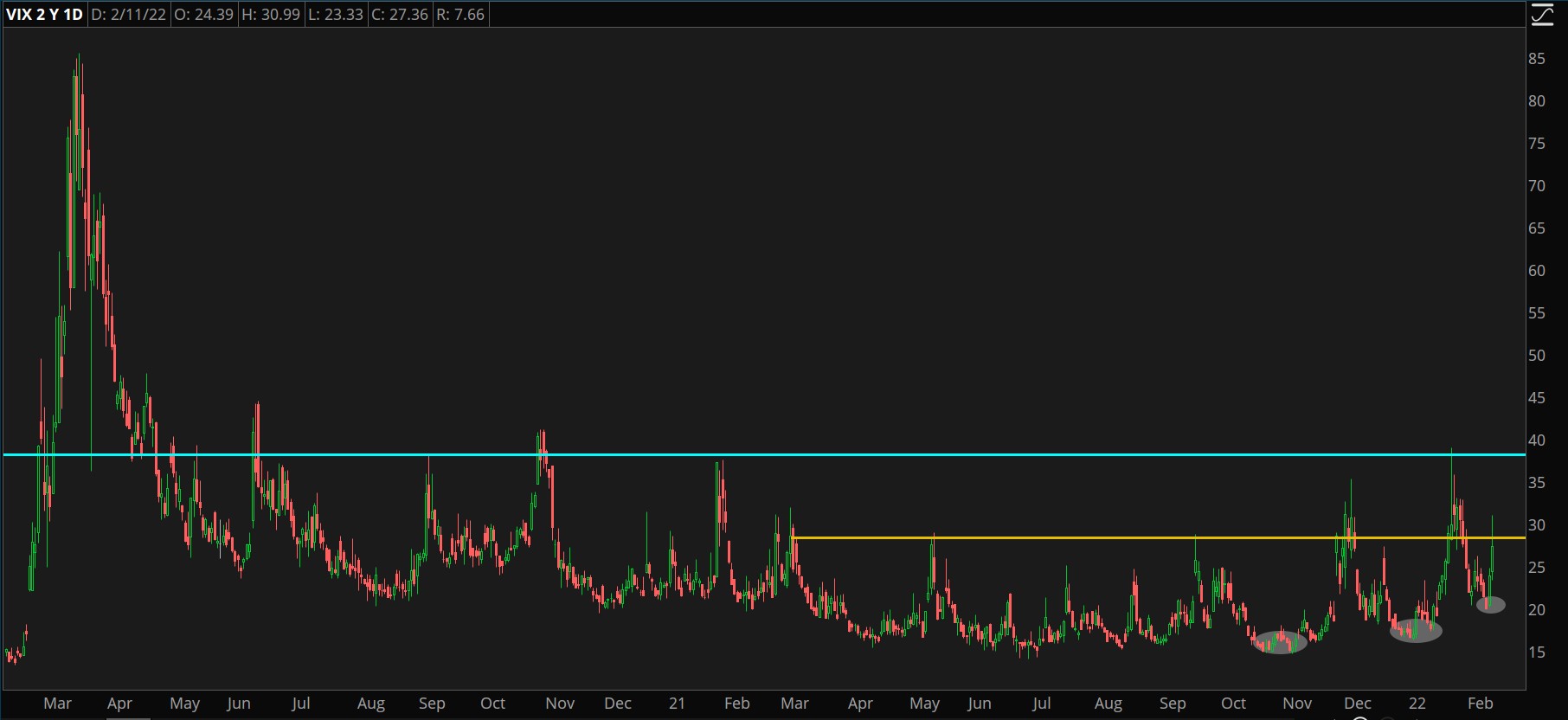(Friday Market Close) Stocks were unable to bounce back from Thursday’s sell-off. Stocks fell throughout the morning as rumors from the United Kingdom surfaced about increasing tensions with Russia. U.S. stocks started selling off going into the lunch hour.
During the afternoon trading session, a White House press briefing with White House National Security Advisor Jake Sullivan revealed that the United States and some of its allies were concerned about Russia possibly invading the Ukraine in the near future. In fact, Mr. Sullivan warned all Americans to leave the Ukraine as soon as possible.
According to euronews, the United Kingdom and Norway joined the United States in urging their respective nationals to leave the Ukraine immediately too. However, the Ukraine appears to be downplaying the threat. Ukrainian Foreign Minister Dmytro Kuleba said that there was “nothing new” from the United Kingdom or the United States.
Tension between Russia and the Ukraine have been ongoing. In 2021, Russia had been slowly accumulating troops in several locations about 250 kilometers or more outside the border. The troop movements have caused Ukrainian allies to try and push back against Russia.
The tensions are likely a contributing factor to rising oil prices. One of the big issues in the Asia and Eastern European region is the building of oil pipelines. So, it’s no surprise that crude oil prices jumped on the news. Crude futures jumped up to $95 per barrel. However, prices pulled back to close at $93.85 for a change of 4.42%. Nonetheless, oil still closed at a new seven-year high.
The S&P 500 (SPX) fell on the news but traded mostly sideways after the press briefing and actually closed off its lows for the day. The SPX closed 1.90% lower on the day. The CBOE Market Volatility Index (VIX) spiked up from about 25 to 31 during the day as investor fears increased. However, the VIX also pulled back, closing at 27.36. The NASDAQ Composite (COMP) was hit the hardest, falling 2.78% on the day. The Russell 2000 (RUT) actually showed some strength in that it fell the least, dropping 1.02%.
Aerospace and defense company Lockheed Martin (NYSE:LMT) rose 2.79% and Northrup Grumman (NYSE:NOC)) increased 4.53%, but the S&P Aerospace & Defense Select Industry Index closed 0.03% lower on the day.
Inflationary Week
In a week that ended up being mostly about inflation, it’s probably no surprise that the inflationary sectors including energy, materials, and financials were top performers. These sectors were also the only sectors to finish in the green for the week. The Energy Select Sector SPDR® Fund (NYSE:XLE) topped the group, returning about 2%. The Materials Select Sector SPDR® Fund (NYSE:XLB) rose near 1.5%. And the Financial Select Sector SPDR® Fund (NYSE:XLF) finished the week about 0.3% higher.
Thursday’s worse-than-expected Consumer Price Index (CPI) showed inflation grew at a pace that hadn’t been seen since 1982. Many economists are expecting to see inflation slow with the holiday shopping season behind us and supply chains opening. The Fed does have one more CPI report before it meets in March, which could give the signs of slowing inflation that many are hoping for.
Going into Friday, the S&P 500 (SPX) was still on the positive side for the week despite Thursday’s sell-off. However, Friday took the benchmark index back into the negative.
According to CNBC, this has been the worst two-day performance for the S&P 500. With that said, the SPX is only about 8% off its all-time high. However, the NASDAQ Composite (COMP) wrapped up its worst two-day performance too. It’s still well into correction territory because it’s down about 14% from its high.
Chart Of The Day: Crescendo?
The CBOE Market Volatility Index (VIX—candlesticks) appears to see increasing fear among investors because it has created higher lows in recent months. It has also broken its short-term reversal line in favor of a longer-term reversal line.

Chart source: The thinkorswim® platform. For illustrative purposes only. Past performance does not guarantee future results. Data Sources::ICE), S&P Dow Jones Indices.
On Second Thought
After Thursday’s CPI report, the CME FedWatch Tool spiked up to a greater than 93% probability of a half-point hike by the Fed in March. However, the market has quickly pulled back from that projection, giving a 54% probability of a half-point rate hike. This tool can vary day to day and likely has no bearing on the Fed’s decision, but it’s helpful in understanding what the markets are telling investors.
As I said above, the Fed has another CPI report before it meets in March, which could signal the slowing that many economists have been projecting. So, it could be that these probabilities will continue to change up or down as more information becomes available.
The 10-year Treasury yield (TNX) was nearing 2.1% Thursday and even inched up a little closer Friday morning but had since pulled back below 2%, closing at 1.955% for the day. There had been some tension around the 10-year yield getting to 2%, so perhaps the bond market can settle down now that the mark was met. Unfortunately, the tension around oil prices possibly reaching $100 may make it hard on bond traders, and the 2-year Treasury yield was testing new highs on Friday.
Disclosure: TD Ameritrade® commentary for educational purposes only. Member SIPC. Options involve risks and are not suitable for all investors. Please read Characteristics and Risks of Standardized Options.
